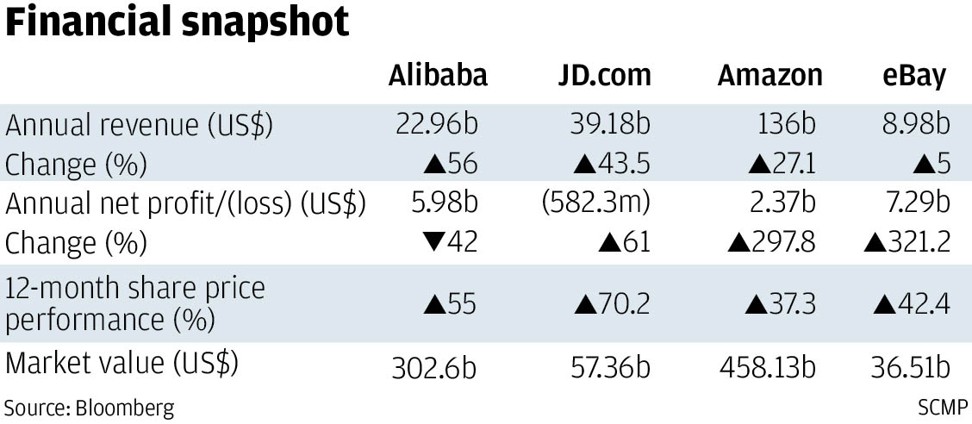
Alibaba international retail commerce sales set to expand on back of Southeast Asian market
Alibaba Group Holding is looking to the fast-growing online retail markets across Southeast Asia to accelerate its push towards two billion global consumers by 2020.
The company’s latest quarterly financial results showed that its US$1 billion acquisition of e-commerce services provider Lazada Group last year has started to pay dividends, according to analysts.
“In our view, the fourth-quarter results indicate that Alibaba’s third-party merchants are having success reaching Lazada’s active users across Southeast Asia, something that should persist in the years to come,” said Morningstar consumer strategist RJ Hottovy.
“We expect more than 50 per cent annual average revenue growth from Alibaba’s international retail commerce efforts over the next five years.”
Alibaba, which owns the South China Morning Post, on Thursday reported a record 60 per cent increase in revenue to 38.6 billion yuan (US$5.6 billion) in its fiscal fourth quarter ended March 31, up from 24.2 billion yuan in the same period last year. That marked the highest growth rate the company has achieved since its public listing in New York in 2014.

In the year to March, Lazada and AliExpress combined for 83 million annual active buyers.
On the mainland, Alibaba’s core retail platforms – including Tmall.com, Taobao Marketplace and Juhuasuan.com – had 454 million annual active buyers during the same period, about a quarter of the way towards its 2 billion goal.
AliExpress currently operates 16 local language marketplaces, including sites in Russian, Spanish and French.
Lazada, meanwhile, has sites in Indonesia, Malaysia, the Philippines, Singapore, Thailand and Vietnam.
“The similarities between e-commerce in China and Lazada’s key operating markets – including high mobile commerce adoption rates and a fragmented traditional retail marketplace – should set the stage for incremental personalised mobile marketing and content opportunities in this region,” Hottovy said.

In that same period, Alibaba’s goal is to achieve a gross merchandise volume of 6 trillion yuan and two billion global customers.
The next five to 10 years will see Alibaba sharpen its focus on international retail commerce growth and bring the products of more Chinese brands around the world, according to company chief executive Daniel Zhang Yong.
“This is a long-term strategy [and] we start with Southeast Asia,” Zhang told analysts in a conference call on Thursday. “We believe this is a very important region with a very big population ... and Chinese products are very popular in this market.”

